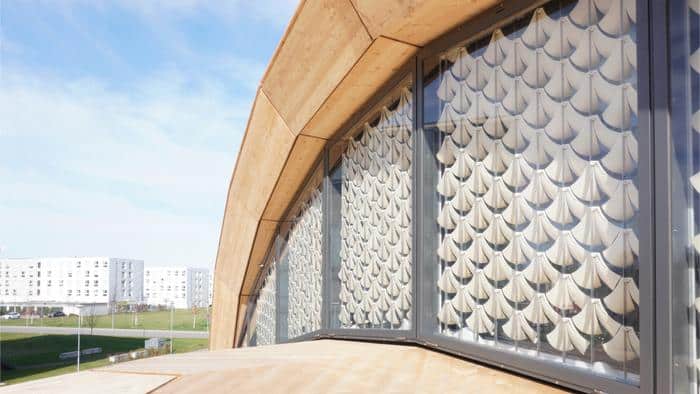Researchers at the universities of Stuttgart and Freiburg have unveiled the “Solar Gate,” the first weather-responsive, adaptive facade system that harnesses natural materials and 4D printing to operate without electrical energy. Inspired by pine cones, this shading system promises a sustainable future in architectural climate control.
A pioneering team of researchers at the universities of Stuttgart and Freiburg has developed a groundbreaking, energy-autonomous facade system that adapts to weather conditions passively, without relying on electricity. Drawing inspiration from the natural mechanisms found in pine cones, this innovative system, named the “Solar Gate,” could mark a significant advancement in sustainable architectural design.
The research findings, published in the journal Nature Communications, reveal the potential of bioinspired design to transform how buildings manage climate control.
“Most attempts at weather responsiveness in architectural facades rely heavily on elaborate technical devices. Our research explores how we can harness the responsiveness of the material itself through advanced computational design and additive manufacturing,” Achim Menges, a professor and head of the Institute for Computational Design and Construction (ICD) at the University of Stuttgart, said in a news release.
The “Solar Gate” operates without the need for any operational energy or mechanical components, making it an energy-efficient and eco-friendly alternative to conventional shading systems.
“We are achieving a shading system that opens and closes autonomously in response to changes in the weather, without the need for operational energy or any mechatronic elements. The bio-material structure itself is the machine,” Menges added.
Leveraging the hygromorphic properties of cellulose, a natural material that expands and contracts with changes in humidity, the research team employed 4D printing techniques to create a bilayered structure inspired by pine cone scales. These structures automatically open and close in response to humidity levels, harnessing the self-shaping and reversible behaviors inherent in the materials.

Caption: The adaptive, self-adjusting shading system “Solar Gate” supports the climate control of buildings.
Credit: ©ICD/IntCDC Universität Stuttgart
“Solar Gate” has demonstrated its functionality and durability through rigorous testing under real-world weather conditions for over a year.
Installed on the south-facing skylight of the livMatS Biomimetic Shell at the University of Freiburg, the system assists in regulating the building’s indoor climate. In winter, it opens to allow sunlight in for natural heating, and in summer, it closes to reduce solar radiation, achieving this adaptive capability independently of any electrical energy supply.
“Inspired by the hygroscopic movements of the scales of pine cones and the bracts of silver thistle, Solar Gate has succeeded in translating not only the high functionality and robustness of biological models into a bioinspired shading system but also the aesthetics of plant movements,” Thomas Speck, a professor of botany and head of the Plant Biomechanics Group at the University of Freiburg, said in the news release. “This can be seen as the ‘royal road of bionics,’ as everything that fascinates us about the biological concept generators has also been realized in the bio-inspired architectural product.”
The implications of this research extend beyond the innovative facade system itself. By reducing the energy needed for heating, cooling and ventilation, the “Solar Gate” system aligns with global efforts to decrease carbon emissions from buildings, which significantly contribute to climate change.
The project showcases how accessible, cost-effective technologies such as additive manufacturing can harness renewable materials like cellulose to pave the way for more sustainable architecture.

